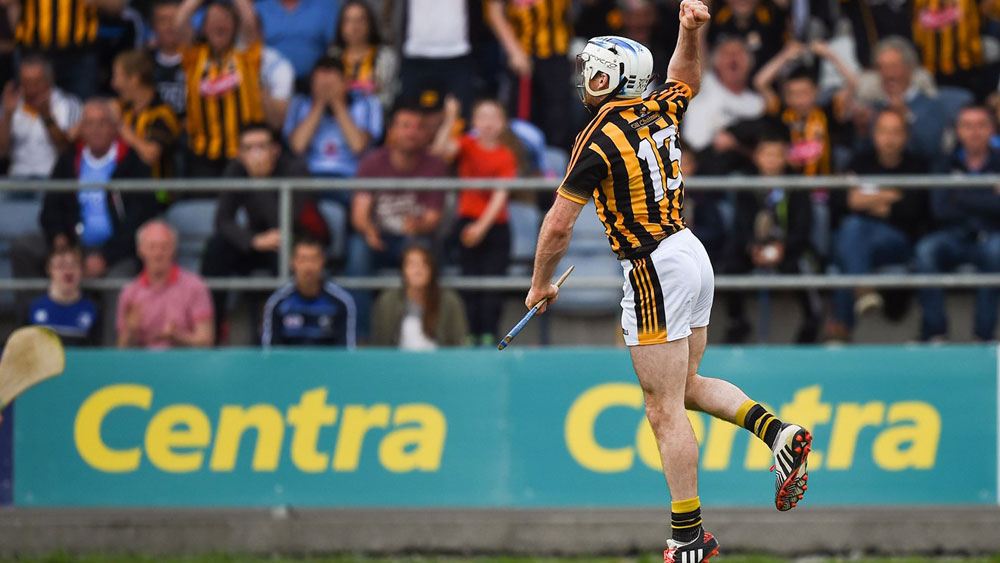
Nov
Bruce Springsteen - Cork and Kilkenny gigs sell out in 90 minutes
Kilkenny gig sell out in minutes as Bruce Springsteen fans snap up tickets. The Boss is coming to Ireland in May 2024
Jun
2016
The chief lesson we have learned is that Kilkenny still look the team to beat. Even without one of their top three performers, Richie Hogan, they eased past a disappointing Dublin side who had impressed in their first game against Wexford.

Above: Jonjo Farrell scored 1-5 from play for Kilkenny.
It was a chastening experience for the Dubs and a setback to their confidence.
It also begs the question as to Wexford’s status in the current order of merit.
Brian Cody will be pleased with the game time for Eoin Larkin and the form of Michael Fennelly as they now head for another Leinster final.
Cody is brilliantly managing the intercounty career of Fennelly who is one of his three main assets and his rock at midfield.
Dublin now head for the first round of the qualifiers which will be made up of three Munster and five Leinster teams.
Clare, Cork, and Limerick or Tipperary will play Leinster opponents while two Leinster teams play one another. The first team out is drawn at home. This is a bonus and all the teams in the drum will hope for home advantage. The four winners then advance to Round 2 the following week.
Dublin will hope to draw one of the easier Leinster opponents to get back up on the championship horse but their ambitions must be well short of All-Ireland glory. They may have to be happy with a top six finish, similar to their ranking in 2015.
It is only June but which counties still harbour ambitions of ultimate glory?
The Leinster counties heading into the qualifiers can be discounted. In Munster, Tipperary or Waterford will want to transverse the direct route while Clare will retain ambitions of coming through the “back door”.
Waterford and Tipp are the other contenders with the enigmatic Galway, on their day, a serious team, also in the wings.
Clare may still have a say but their preparation and efforts to win the Allianz League may reduce their chances of peaking again in September.
Kilkenny remain favourites and if they can get their first choice 15 onto the battlefield on All-Ireland final day, they will be very difficult to dethrone.
It may be a slightly easier task in the semi-final, assuming they win Leinster, when they will have been inactive for a number of weeks.
Last Saturday evening, Kilkenny’s work-rate (from their forwards especially) was superb. They zoned in on Liam Rushe when he got possession and prevented him from using the ball effectively. Rushe is one of Dublin’s ‘big’ players and the strategy of negativing the opposition’s star men is a traditional Kilkenny ploy.
They were helped enormously by the failure of Dublin’s puck-out strategy which was designed to put their players in direct possession. This worked against Wexford who stood off the receivers. It should have been obvious pre-game that Kilkenny would push up on their men come Dublin puck-out time. Goalkeeper Conor Dooley persisted in trying to ‘find his man’ when Kilkenny were marking tightly. This led to a number of direct turnovers and Kilkenny scores. These are always huge psychological blows that sap morale and self-belief. Dublin needed to play the percentage and go long, hoping to pick up the breaks.
In the first half, Dublin’s pacey wing forward, Daire Plunkett, constantly dropped deep into midfield and picked up a lot of ball.
His marker Cillian Buckley held his wing-back position conceding time and space to his opponent. The Dublin tactic was to run at Kilkenny. However the Kilkenny midfielders Conor Fogarty and Michael Fennelly, a colossus in Portlaoise, dropped into their half-back line at the first sign of danger and their half-forwards also funnelled back, clogging up the centre.
This is second nature to them now and the reason they don’t need a sweeper.
This tactic is designed to defend the ‘D’ preventing goal chances.
The Kilkenny defence willingly give away frees rather than run the risk of conceding a goal. The Dubs were wind-assisted in the first half. Dublin needed some long-range points from Plunkett to force his marker Buckley, out of his position so as to create space for Dotsie O’Callaghan inside. Plunkett isn’t a recognised long-range point scorer and David Treacy might have been a better option for this role.
One could imagine Waterford’s Pauric Mahony or Tipp’s John O’Dwyer playing this role successfully.
All team managers will have watched Kilkenny closely and mentally filed away any perceived flaws they feel exist. Paul Murphy was very sharp last Saturday but Brian Cody will have concerns about his full-back line as a unit.
Kilkenny put on huge pressure for the first 15 minutes of the second half.
This strategy undid Tipperary in the 2014 All-Ireland replay; Galway in the final last year and it was a successful ploy again in Portlaoise on Saturday.
Dublin were only a point down at half-time but they had no tactics worked out to clog the middle third and bring the fight to the Cats in this period.
The champions reeled off 1-8 without reply.
Devising a tactic to slow down the play and the scoring rate just after half-time is essential when playing Kilkenny. It will be interesting to see what other opponents will learn from this game in the months ahead.
source: Irish Examiner
Share this: